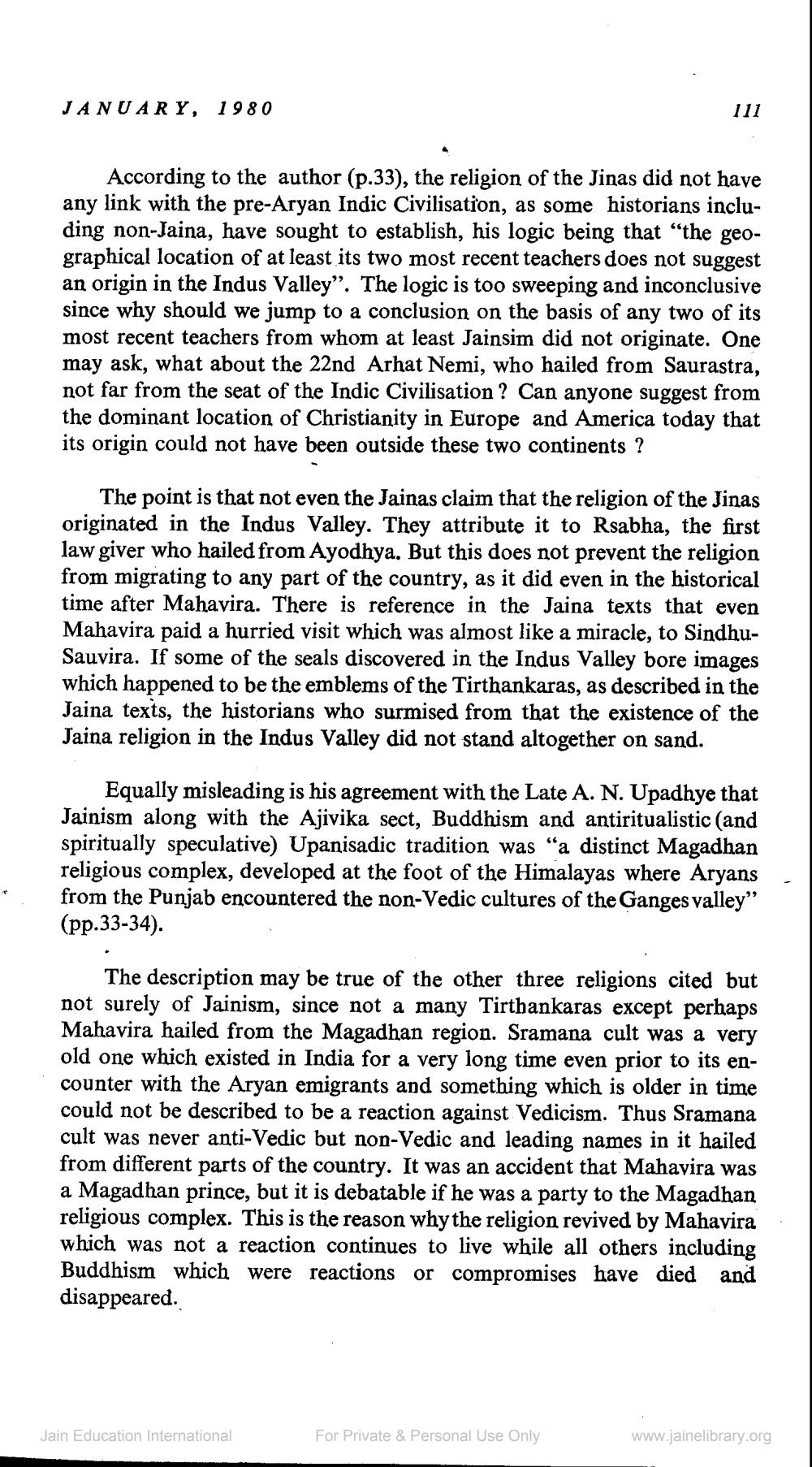________________
JANUARY, 1980
111
According to the author (p.33), the religion of the Jinas did not have any link with the pre-Aryan Indic Civilisation, as some historians including non-Jaina, have sought to establish, his logic being that “the geographical location of at least its two most recent teachers does not suggest an origin in the Indus Valley”. The logic is too sweeping and inconclusive since why should we jump to a conclusion on the basis of any two of its most recent teachers from whom at least Jainsim did not originate. One may ask, what about the 22nd Arhat Nemi, who hailed from Saurastra, not far from the seat of the Indic Civilisation? Can anyone suggest from the dominant location of Christianity in Europe and America today that its origin could not have been outside these two continents ?
The point is that not even the Jainas claim that the religion of the Jinas originated in the Indus Valley. They attribute it to Rsabha, the first law giver who hailed from Ayodhya. But this does not prevent the religion from migrating to any part of the country, as it did even in the historical time after Mahavira. There is reference in the Jaina texts that even Mahavira paid a hurried visit which was almost like a miracle, to SindhuSauvira. If some of the seals discovered in the Indus Valley bore images which happened to be the emblems of the Tirthankaras, as described in the Jaina texts, the historians who surmised from that the existence of the Jaina religion in the Indus Valley did not stand altogether on sand.
Equally misleading is his agreement with the Late A. N. Upadhye that Jainism along with the Ajivika sect, Buddhism and antiritualistic (and spiritually speculative) Upanisadic tradition was “a distinct Magadhan religious complex, developed at the foot of the Himalayas where Aryans from the Punjab encountered the non-Vedic cultures of the Ganges valley” (pp.33-34).
The description may be true of the other three religions cited but not surely of Jainism, since not a many Tirthankaras except perhaps Mahavira hailed from the Magadhan region. Sramana cult was a very old one which existed in India for a very long time even prior to its encounter with the Aryan emigrants and something which is older in time could not be described to be a reaction against Vedicism. Thus Sramana cult was never anti-Vedic but non-Vedic and leading names in it hailed from different parts of the country. It was an accident that Mahavira was a Magadhan prince, but it is debatable if he was a party to the Magadhan religious complex. This is the reason why the religion revived by Mahavira which was not a reaction continues to live while all others including Buddhism which were reactions or compromises have died and disappeared.
Jain Education International
For Private & Personal Use Only
www.jainelibrary.org




